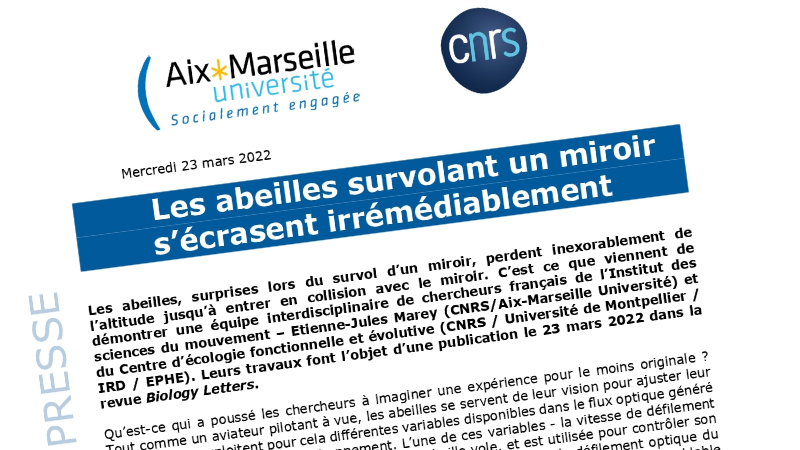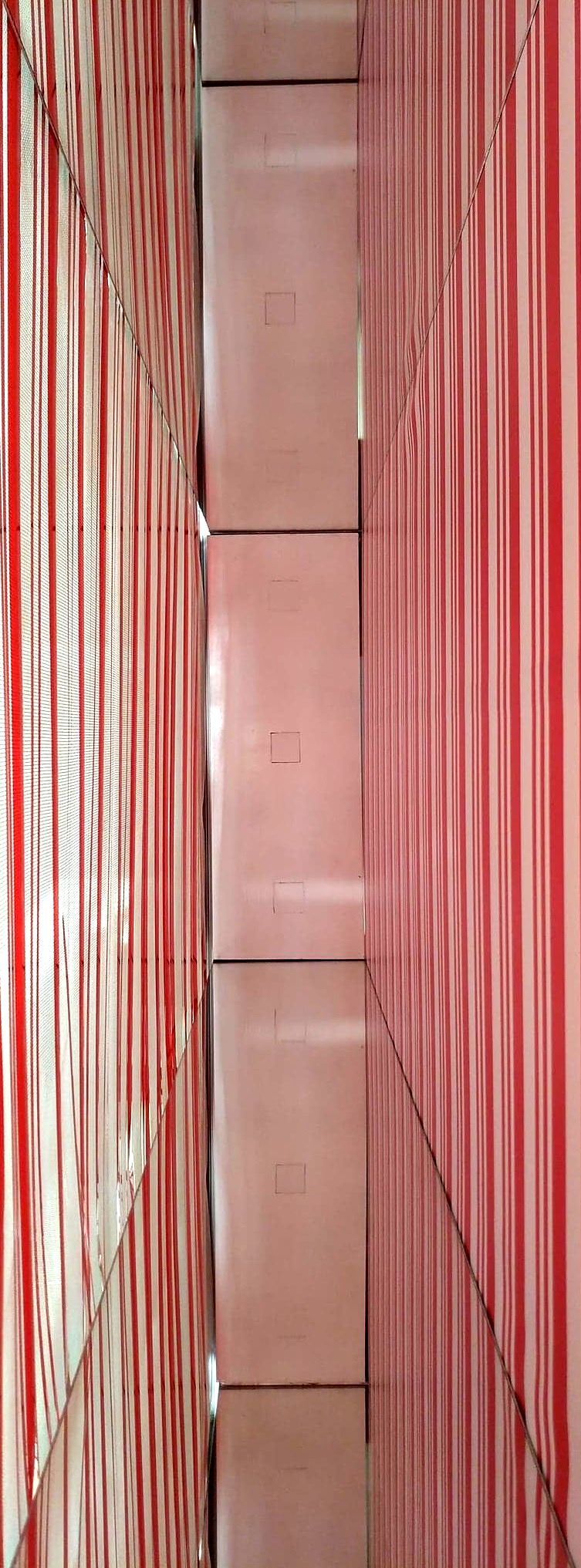
Surprised when flying over a mirror, honeybees inexorably lose altitude until they collide with the mirror. This is what has been demonstrated by an interdisciplinary team of French researchers from the Institut des sciences du mouvement – Etienne-Jules Marey (CNRS/Aix-Marseille Université) and the Centre d’écologie fonctionnelle et évolutive (CNRS/Université de Montpellier/IRD/EPHE). Their work was published on March 23rd 2022 in the journal Biology Letters.
What led the researchers to devise such an original experiment? Like an aviator flying by sight, honeybees use their vision to adjust their altitude. They can then exploit different variables available in the optic flow generated by their movement in the environment. One of these variables - the "optical scrolling speed of the ground" - depends on the altitude at which the honeybee flies, and is used to control its altitude. The researchers then imagined manipulating this "optical scrolling speed of the ground" by overriding it to see if the honeybees could fly in this unlikely environmental setting.
The setup is as follows: the honeybees are trained to fly through a tunnel with sweet treats as a reward, and then various elements of the tunnel walls, on the floor or ceiling, are replaced by mirrors to make them believe that the floor is twice as low, or even projected infinitely downwards. When observing what happens, the result is clear: without this "optical scrolling speed of the ground", the honeybees fall or bounce off the mirror, certainly in search of the ground.
But this optical configuration is not so implausible. Sixty years ago, Herbert Heran, an Austrian entomologist, and Martin Lindauer, a German behavioural scientist, trained honeybees to fly over a lake. When there were visual contrasts in the surface of the lake or a bridge of planks, the bees flew across the lake. In contrast, when the surface of the lake was mirror smooth, the bees flew lower and lower until they came into contact with the water surface (see Heran and Lindauer, 1963*).
The originality of this work lies in the design of controlled and manipulable optical configurations that best approximate the natural flight conditions of bees, without the need for a lake or sacrificing bees to study altitude control. Julien Serres explains that one must first be certain of being able to disrupt the honeybees' altitude control in order to then offer them other optical information, and study their combination to describe the altitude control.
This unprecedented experiment, carried out in a controlled manner, echoes the numerous accidents of aviators or pilots who have difficulty perceiving the ground when it is no longer textured (desert dunes, snow, lake, etc.). It aims to better understand how to combine several pieces of information to visually control the altitude in order to develop pilot aids or to automate flights. Finally, this study also surprisingly confirms that the best way to escape a swarm of honeybees is to dive into the water and avoid making too many waves!
Learn more: Julien R. Serres, Antoine H.P. Morice, Constance Blary, Romain Miot, Gilles Montagne, Franck Ruffier. Floor and ceiling mirror configurations to study altitude control in honeybees. Biology Letters, March 2022. https://doi.org/10.1098/rsbl.2021.0534
*Heran, Herbert, and Martin Lindauer. "Windkompensation und seitenwindkorrektur der bienen beim flug über wasser." Zeitschrift für vergleichende Physiologie 47.1 (1963): 39-55
Watch the video of the experimental device on the Youtube channel of the Institut des sciences du mouvement - Etienne-Jules Marey, as well as a presentation of the article (in English).
Researcher contact:
Institute of Movement Sciences - Etienne-Jules Marey
Julien Serres - julien.serres@univ-amu.fr



